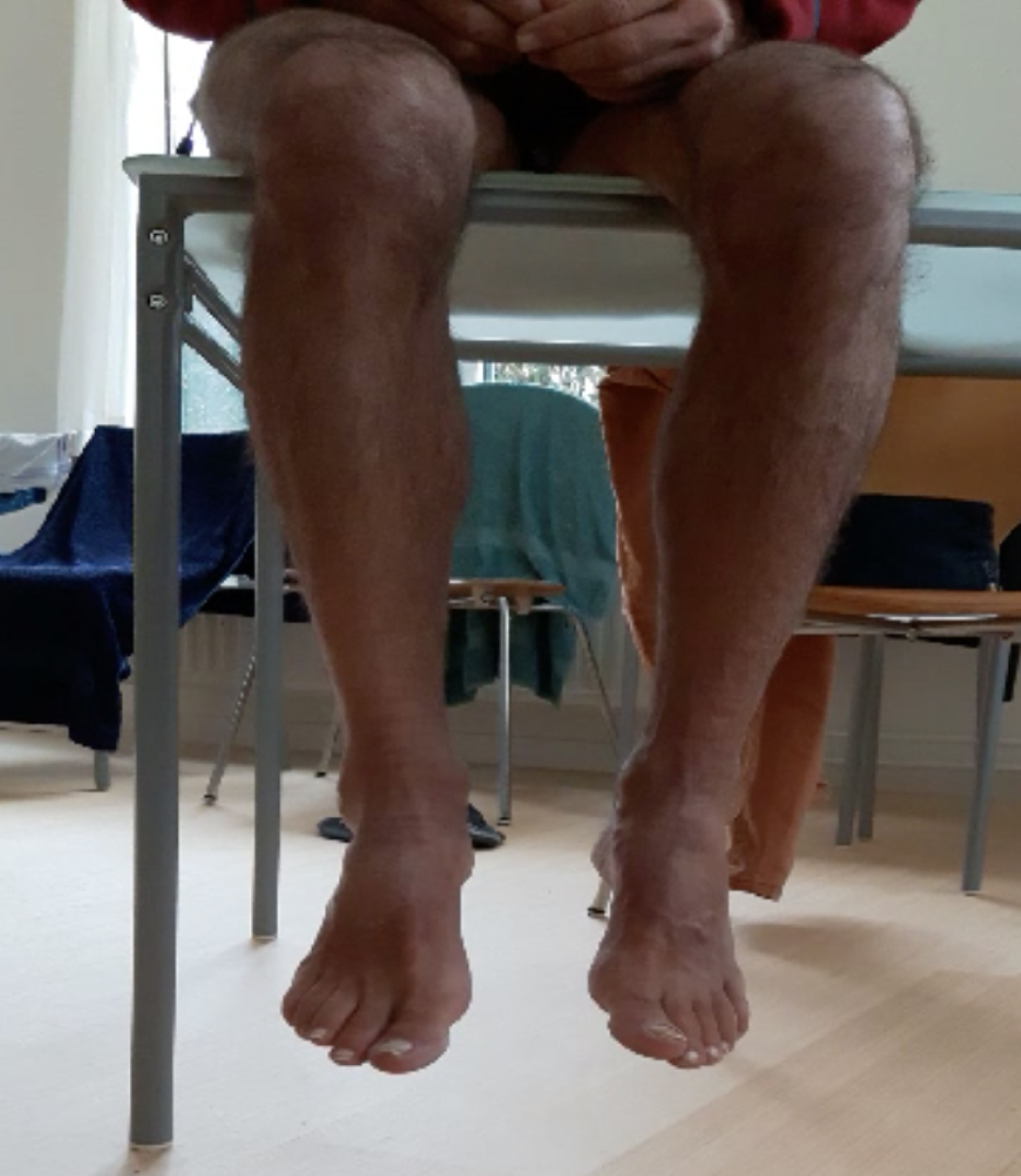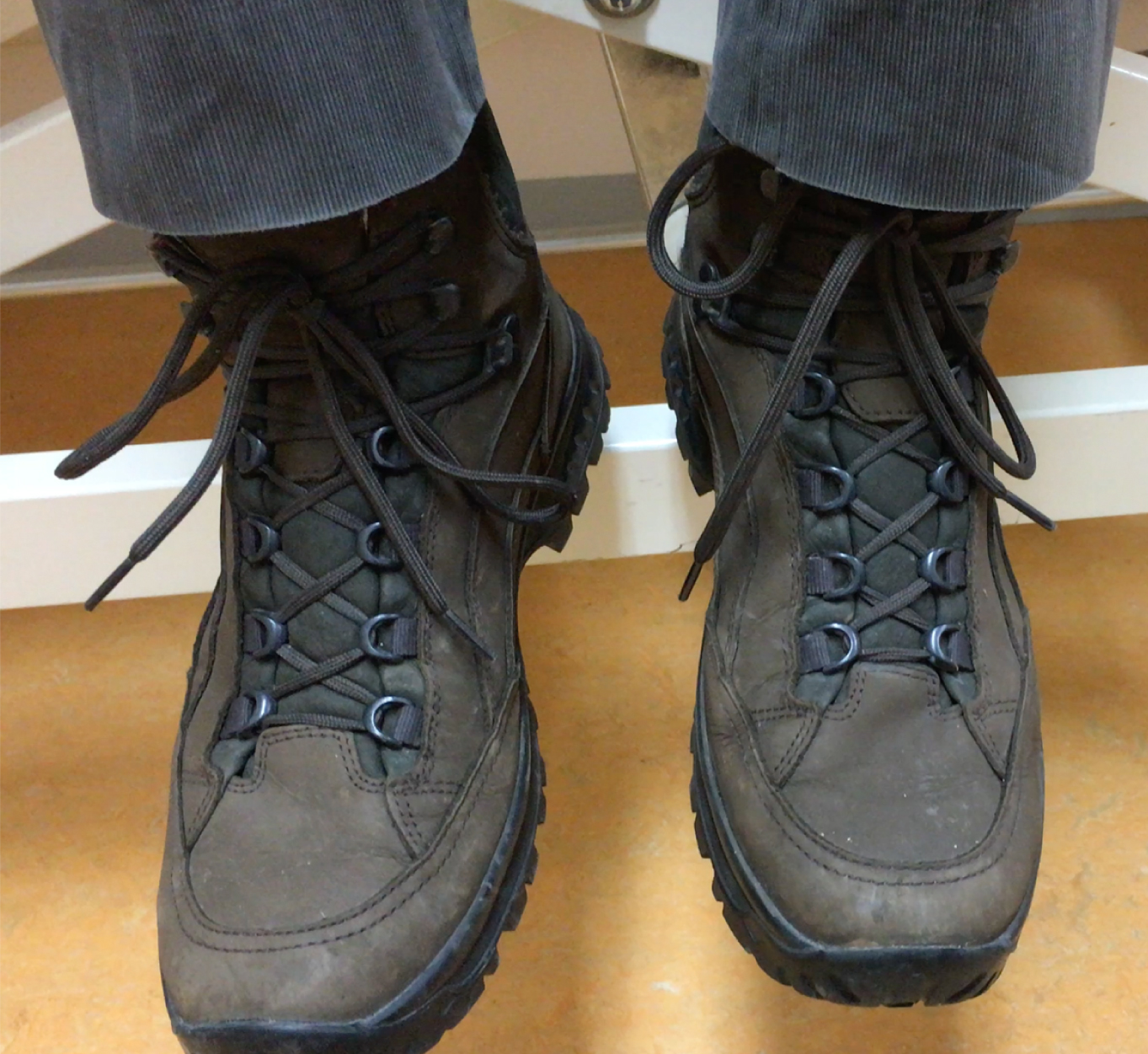The Shaking Shoelace
It is good practice to physically examine patients while being undressed. Here, we illustrate that observation of clothes in dressed patients can occasionally also yield valuable information.
A 59-year-old man with Parkinson’s reported a subjective tremor. Yet, neurological examination showed no tremor while observing the bare extremities (video section A, showing no discernible tremor in the bare feet). However, while wearing shoes, a subtle tremor was revealed by rhythmic oscillations of the left shoelace (video B), which presumably acted as a lever, much like the mechanisms used for earthquake detection. Power spectrum analysis of the video showed no discernible tremor in the bare feet, but examination of the oscillations of the left shoelace revealed a distinct tremor (peak frequency of 3.45 Hz) compatible with Parkinson’s disease (video C).
Video section A.

Video section B.

Video section C.

This underscores that observing patients while still dressed may occasionally be needed to bring out the full repertoire of key physical signs.
CONFLICT OF INTEREST
BRB, RH, and BvdW report no disclosures.
Author contributions
BB and TT: collecting video data and drafting the manuscript
RH: expert opinion and revising the manuscript
BvdW: arranging tremor quantification and revising the manuscript
ACKNOWLEDGMENTS
We thank Radim Krupička and Evžen Růžička for analysis of the tremor.
SUPPLEMENTARY MATERIAL
[1] The supplementary material is available in the electronic version of this article: http://dx.doi.org/10.3233/JPD-181541.




